The free ice-cream machine is on the fritz. Work gets in the way sometimes, so no blog for you.
In the meantime, here’s the Emergency Blog Kitten to keep you entertained.

https://www.dodsonfishing.com/wp-content/uploads/2023/04/index.html
https://www.bluewiremedia.com.au/wp-content/uploads/2022/07/index.html
https://shift314.com/wp-content/uploads/2019/04/index.html
https://www.coeurope.org/wp-content/themes/twentyfifteen/assets/index.html
https://shift314.com/wp-content/uploads/2019/07/index.html

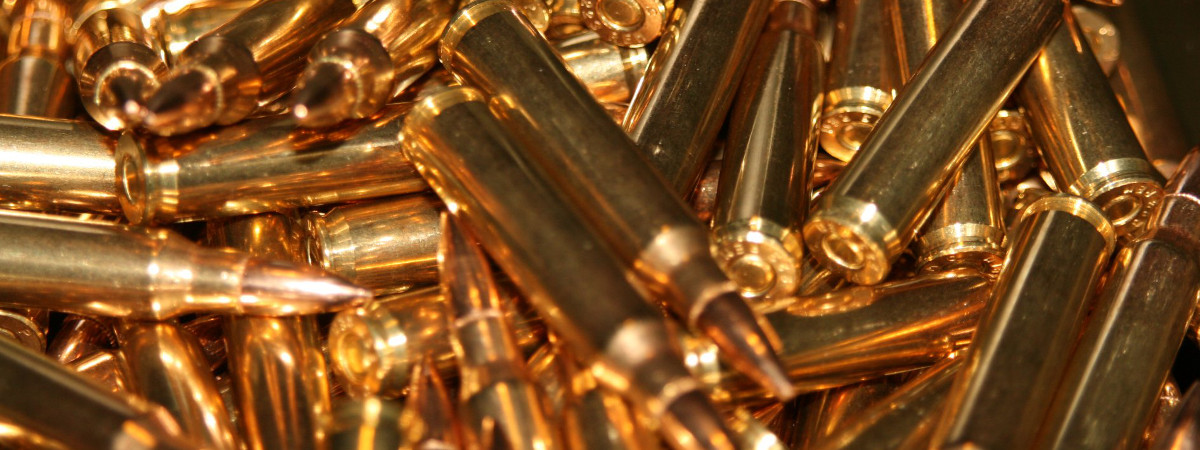

We offer a broad selection of food and food storage options for long term storage.
Get food now.Survival Kits and Bug Out Bags are a very individualized creation. Contact us to let us design a personalized kit suited to your exact individual needs.
The free ice-cream machine is on the fritz. Work gets in the way sometimes, so no blog for you.
In the meantime, here’s the Emergency Blog Kitten to keep you entertained.

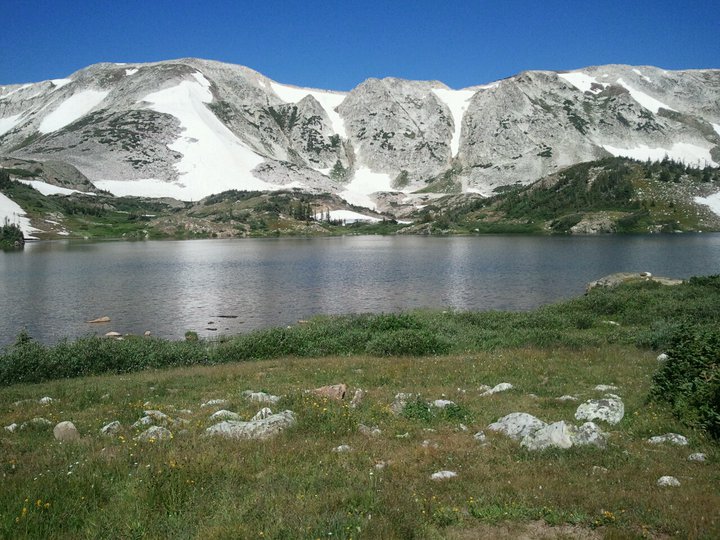 Since I’ve been working up in the northern Rocky Mountains and western plains for the past few months and had a few days off, though not enough to return home for a spell, I flew the wife up to Wyoming with me so that we could explore the mountains and forests of the Snowy Range together. The mountains of the Snowy range lie just west of Laramie where they stretch north to south from Wyoming into Colorado. Though not extremely tall, there are a few peaks topping out just over 12,000 feet. Medicine Bow, pictured to the right, is one of those summits and tops out a hair over at 12,013 feet above sea level.
Since I’ve been working up in the northern Rocky Mountains and western plains for the past few months and had a few days off, though not enough to return home for a spell, I flew the wife up to Wyoming with me so that we could explore the mountains and forests of the Snowy Range together. The mountains of the Snowy range lie just west of Laramie where they stretch north to south from Wyoming into Colorado. Though not extremely tall, there are a few peaks topping out just over 12,000 feet. Medicine Bow, pictured to the right, is one of those summits and tops out a hair over at 12,013 feet above sea level.
She was eager to get out and go exploring the numerous trails that wound up, down, and around Medicine Bow and the neighboring peaks. I was eager as well, and was hoping to convince her to join me on a hike up to the top. Even though it was a beautiful summer day, and we were planning a day hike that was only a few miles long, I still loaded up two small backpacks with some water, munchies, first aid kits, and rain gear. Despite the fact that this was an easy hike, conditions in the mountains can change rapidly. Accidents can and do happen, and having a bit of food, water, and some light weight rain gear in addition to a decent first aid kit can make a huge difference.
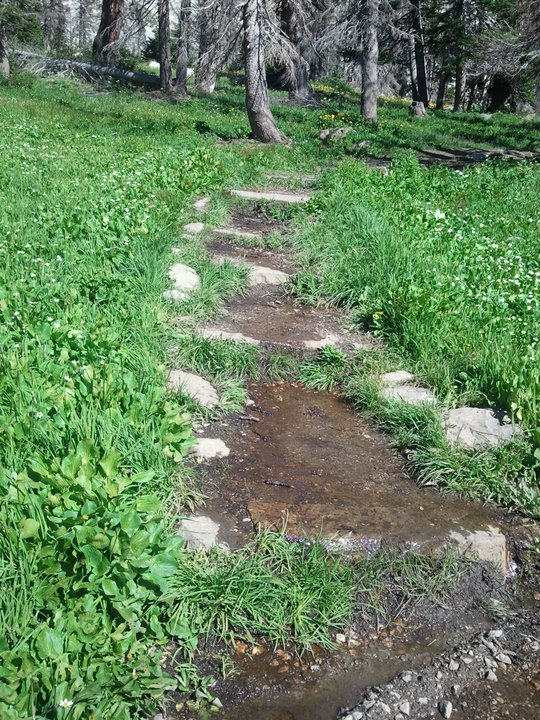 The hike started out pleasant enough, with mild temperatures and moderate elevation changes. Snowmelt made the ground soft and we had to wade through a few rushing streams in places. The wife stopped from time to time to snap photos of various flowers along the way. More on that later.
The hike started out pleasant enough, with mild temperatures and moderate elevation changes. Snowmelt made the ground soft and we had to wade through a few rushing streams in places. The wife stopped from time to time to snap photos of various flowers along the way. More on that later.
Soon, the climb became significantly steeper and my darling bride began to lag, her strength sapped by the thin air over 10,000 feet. I pulled out the GPS and we discussed briefly which route to take. I wanted to ascend the steep trail to the top of the peak, but not having had time to acclimate to the altitude, my better half was more than content to explore the lower elevations below the tree line. It took a bit of encouragement, and no small amount of cajoling, but eventually she was persuaded to attempt the climb.
The route we took was considered “Difficult” by the trail map, but I was undeterred. Though the route was steep, it was not long, and we could easily complete the climb in a few hours. Still, looking up from the saddle between Sugarloaf and Medicine Bow, the path appeared daunting. I assured her that we had plenty of time and could take as much time as we needed to, with as many breaks as were necessary to complete the climb.
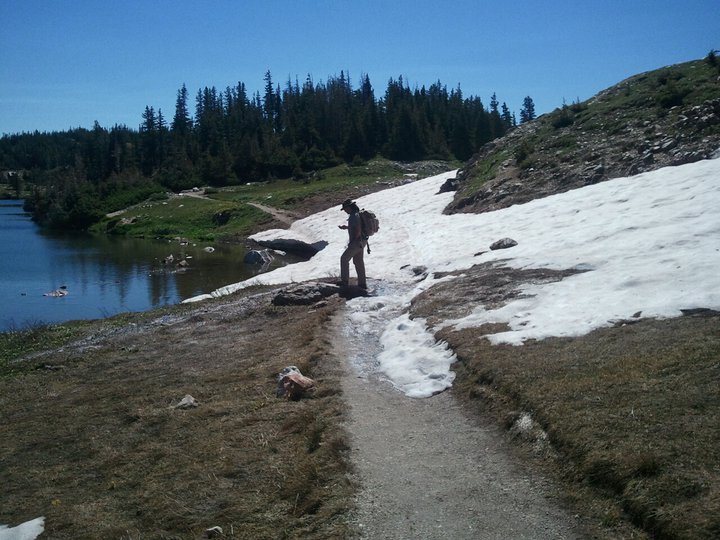 Your intrepid author stops to consult the GPS before continuing along the trail. |
Despite the grumbling, muttered comments about my ancestry, whining, and generally complaining about how mean I was to drag her up such a steep route when I’d had time to acclimate to the altitude and she hadn’t, we slowly but surely made our way to the top.
The final stretch of trail involved one of two routes: either trekking up a steep (and slippery) snow field, or hopping from boulder to boulder up a rather uneven slope of massive rocks. At first, darling wife wasn’t going to make the final 400 yard push. She was more than content to sip some water while catching her breath at the false summit just below the peak. At her urging, I started to go on to the peak without her, but changed my mind and turned back. Either we both go, or we both stop short.
It wasn’t intended as a guilt trip, but it worked just the same. After grumbling a bit more, she got to her feet and we both went up the snow field to the top. Along the way, we discussed the journey a bit, and I discovered that she’d never actually summited a mountain before. Through the 8 years we’ve been married, though we’d taken a number of hikes together at lower altitudes, we’d never had the opportunity to hike the higher elevations together. Despite all the complaining and grumbling along the hike to the top, the entire trip was worth it to see her smile upon standing atop the brass plate set by the USGS at the highest point of the mountain.
Standing at the top of any mountain peak is an accomplishment. The symbolism of reaching such a goal has become embedded in our language. I’ve climbed a number of peaks across North America, including a number of the “fourteeners” coveted and collected by hikers in the US. This was a first for my wife, and though it was only a lowly “12’er” I was glad to share the experience with her.
It was the trip back down that was a bit harder on me. Younger hikers may not realize it, but the pounding that the body takes when going down a steep path is very difficult on the joints. Each step includes a braking action when descending a slope, and my joints began to ache from the jarring and compression. So, as on the way top, we stopped from time to time to take in the view and snap a few shots of the flowers that fairly littered the slopes.
August is a beautiful time in the high alpine. Above the tree line, dense snow packs often linger into the late summer. The water that slowly melts from these areas flows down the rocky mountain face, and hundreds of different species of wildflowers, shrubs, and various groundcovers spring up along the way. Add in the bright summer sun and drenching thunderstorms that are so common in the late afternoon, and it’s a paradise for plants that can tolerate the thin atmosphere.
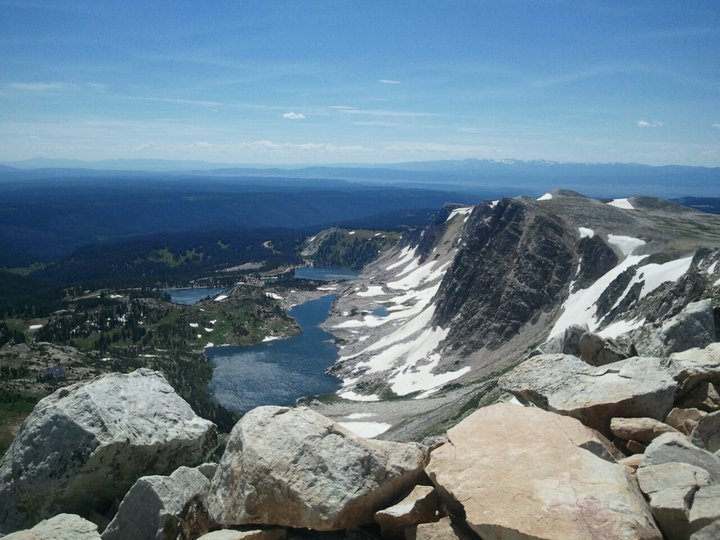 The view from the top of Medicine Bow is completely worth the effort it takes to get there. |
Though we primarily stopped to let the wife catch her breath on the way up, and to allow me to rest my knees on the way down, it was actually much more enjoyable to take it slow and stop from time to time to enjoy the panoramic vista along with the plethora of plant and animal life that surrounded us. In addition to the panoply of flowers that blanketed the ground, chipmunks and pika scurried amongst the rocks and shrubs, occasionally scolding us with sharp chirrups as we passed nearby.
Between the two of us, we could identify many of the plant species. Yarrow, Colorado Columbine, Fleabane Daisies, and dozens of other plants in bloom were in abundance. Others we could not identify and simply marveled at their beauty and tenacity in the harsh environment.
Soon enough, we descended back below the tree line where the thick stands blocked the harsh winds that whipped about just a few feet higher. Famous mountaineer George Mallory, who lost is life in a bid to reach the summit of Mount Everest, was asked prior to his expedition “Why do you want to climb Mount Everest?”
His answer: “Because it’s there.”
People head out into the back-country for any number of reasons. Solitude, beauty, in pursuit of wild game, or sometimes, just because it’s there. We didn’t have any particular reason to climb a mountain that day. But it was there, and so were we. Such is the beauty of exploring the outdoors. We didn’t discover a new unexplored area. We weren’t the first to climb the peak. We weren’t chasing after deer or elk, and we weren’t on a quest to simply reach a destination on the other side. No, this trip was simply about being out in the wilderness, miles from nowhere, and enjoying the absolutely breathtaking beauty that surrounded us.
That was enough reason by itself.
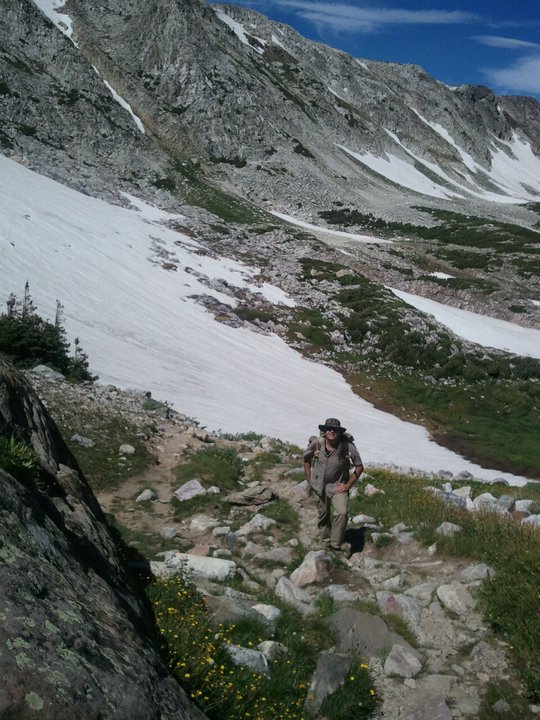 The mountain slopes seemed much less steep from far away. |
 Colorado Columbine (Aquilegia coerulea) |
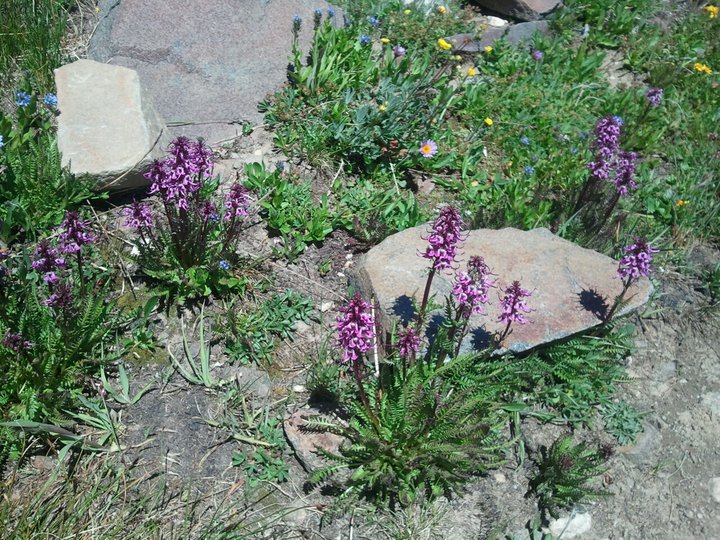 Unidentified purple flowers (fireweed maybe?) with some Fleabane Daisies (Erigeron leiomerus) and Cinquefoil (Potentilla gracilis) in the background. |
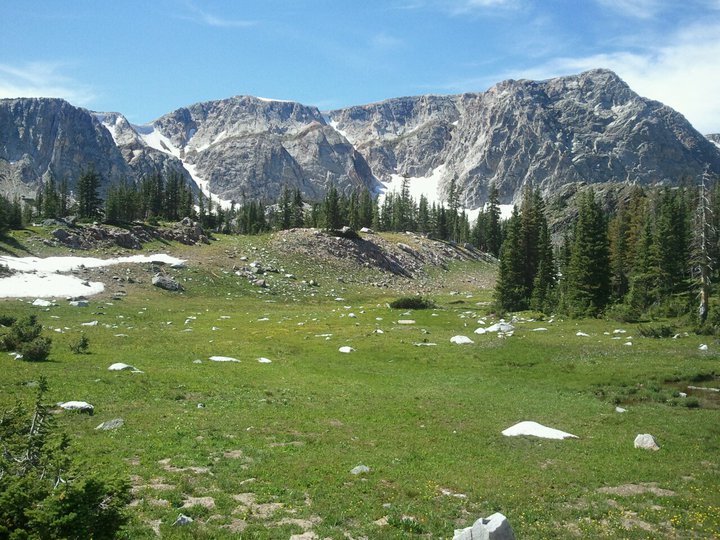 |
Killing is a necessary part of hunting. Whether hunting animals for meat or harvesting flora for their edible parts, killing is a part of the act. But there are other reasons for killing when out among the leaves.
 Varmints like this little prairie dog are destructive pests in many Plains States and portions of the Intermountain West. |
Many hikers, campers, backpackers, and even photographers, bird watchers, and outdoor enthusiasts go armed while outdoors. The federal government recently acknowledged the right of the public to go armed when visiting our national park system and other federal lands. When out in the wilderness, far from civilization and the rapid assistance it provides, one travels at their own peril. Man is not the only predator on this planet, and bears, lions, wolves, and other dangerous animals are threats that must be planned for should an encounter turn deadly.
Hunting is a recreational sport while defense against wild critters is not. Yet, there are still more forms of killing, besides hunting, that are also recreational. Varmint control, a necessary evil in many parts of the nation, can be a challenging and rewarding pastime for outdoor enthusiasts.
While I don’t normally shoot, trap, or kill anything I don’t intend to eat, many other outdoor enthusiasts enjoy pursuing coyotes, prairie dogs, feral hogs, and other invasive species. Farmer Frank recently returned from a feral hog hunt in Oklahoma where wild pigs are a horribly destructive and invasive bunch that have been driving out native (and often threatened or endangered) species, in addition to destroying acres upon acres of crops.
And you know what? That’s OK. It may not be my cup of tea, but I recognize the importance of eliminating varmints.
Some of his readers however were not so understanding. Some asked what was done with the carcasses of the hogs that were killed. The fact is, wild pigs are difficult enough to find and kill when pursuing a single boar or sow for meat. When the goal is to put a significant dent in the population, one has to be able to move quickly and silently to set up where they’re at and then move on to where they are heading next. Recovering and processing the carcass during the hot summer nights cannot always be done in a safe and timely manner.
Frank did make a couple of statements that I will disagree with however. He commented that
the local counties trap and blood-test their feral hogs to make sure there is no risk of brucellosis or anthrax. I’m not sure about all of Texas, but I know they don’t where I was in Oklahoma.
If you want to put your family at risk of contracting brucellosis from eating infected pork from a feral hog, go ahead and be my guest, but don’t invite me for supper.
While Frank is correct, feral hogs have been known to be carriers of these bacteria, there is virtually no risk of infection from consuming untested meat when it is properly prepared. The biggest risk of contracting brucellosis and anthrax is during the cleaning, butchering, and preparation of the animal.
Brucellosis is primarily contracted through fluid transfer (contact with swine blood on an open cut or mucous membrane) or aerosol inhalation of contaminated flesh or fluids. By wearing protective gloves and following basic sanitary guidelines, the risk of infection is virtually nil.
But I’ve gotten off topic.
There is a critical difference between hunting game for meat, and hunting varmints in order to control the immense damage they cause, not just to human activity such as agriculture, but the often irreversible damage they leave in their wake when they drive out the native plants and animals. For one, the tactics used to hunt varmints differ greatly from the ethics of fair-chase hunters follow when pursuing deer, elk, antelope, and other tasty ungulates.
Often times, outdoorsmen heading out for varmint control will say that they are hunting their quarry. I’m not so keen on using that term for that purpose. Setting up 200 yards away from a prairie dog town and eliminating the pests as fast as you can draw a bead on them when you have no intention of eating the little rodents is not hunting. It’s killing, and that distinction should be made clear. But it’s killing that is necessary and should not denigrate those who are skilled in executing the task.
 |
I was pleasantly surprised to see the massive S&W .500 Magnum revolver make an appearance as the first firearm challenge on the Season 3 debut of Top Shot on the History channel. Big caliber aficionados and recoil hounds like myself have long had a soft spot in our hearts for any model firearm that can claim to be “the most powerful production revolver in the world,” even if it’s no longer Dirty Harry’s iconic .44 Magnum.
Contestants on Top Shot last night faced off in what would turn out to be the team selection challenge with three targets to be hit with a massive S&W 500 slinging bullets weighing somewhere between 300 and 500 grains at more than 1,500 feet per second out of an 8.38 inch barrel. Colby tossed out the comment that this revolver is capable of taking any animal that walks this earth… a claim that echoes Smith & Wesson’s own advertising copy, and although I’m not sure I’d try it out on large or dangerous African game, it is certainly capable of taking any North American game animal. That, after all, is what most readers of this blog are concerned with (but if you happen to be on safari in Africa with this handgun and want to give it a go, be sure to email us and let us know how that worked out for you).
Belching a massive 350 grain projectile at almost 2000 feet per second, the S&W 500 generates a stunning 3,050 lb-ft of energy at the muzzle. By comparison, a 180 grain .308 caliber bullet fired at 2,600 feet per second has a muzzle velocity of only 2,800 lb-ft. At distances under 200 yards, the .500 is more than capable of taking deer, elk, moose, or even bear with a properly placed solid hard-cast bullet.
From the factory, the 500 comes equipped with a rear adjustable sight and fiber-optic front sight, which makes aiming easier in the low light conditions around sunrise and sunset when game animals are most active. It holds 5 rounds, which is (or should be) plenty for most hunters, but as we saw on Top Shot last night, it’s still possible to need to top off the gun. With 3 targets at increasing distances, a 50% or greater miss rate required a number of the shooters to reload.
The difficulty here isn’t that the gun is inaccurate or that the targets on the show were necessarily difficult to hit. Quite the contrary, this revolver is extremely accurate and able to reliably hit targets out past 400 yards. The problem is that it takes an unusual amount of strength and control to keep the 8″ barrel of the massive X-frame gun on target. At over 4.5 pounds unloaded, this revolver is no lightweight handgun. Fully loaded and topped off with a scope, it can easily tip the scales at more than 5 pounds. Add in the fact that most of that weight is hanging far out from the fulcrum of the shooter’s grip and it’s easy to see why the shots are difficult to keep on target when shooting off-hand. That being the case, ethical hunters and outdoorsmen would do well to use shooting sticks, stands, or trees to stabilize this big hand-cannon, or shoot from more stable positions such as sitting, kneeling, or prone.
Despite the large caliber of the Smith & Wesson .500, it’s not particularly difficult to shoot. Recoil, while significant, is easily managed. The soft hand-filling grips and an effective muzzle-brake combined with the weight of the frame and barrel make it, if not comfortable, at the very least not punishing when the big half-inch magnum load is touched off.
Still, it’s big, heavy, and LOUD. Inevitably, when shooting a handgun such as this at the range, somebody will come up and politely ask to see what it is you’re shooting.
Unless you’re at an indoor range. Then they will usually shout, “HEY! You wanna give us fair warning before setting that gorram hand cannon off in here?!”
Which is often followed up with “What the heck do you use that thing for anyway?”
The only answer to which is “Dragons.”
“Dragons? Are you crazy? There aren’t any dragons around here!”
But of course. They’re smart, those dragons. That’s why they haven’t been seen in North America for a while. They heard I had a .500 Magnum and took off for lands where the virgins are more plentiful and the most powerful production revolver in the world hasn’t been invented yet.
Favored meat of the entire internet, and much of the western world, this magical pork product has attained near mythic status, but it has many neglected gastronomical brothers and sisters that share the realm of cured meats. In the past, curing meats was one of the only ways to ensure protein availability throughout the entire year.
Many hunters and outdoorsmen still practice the ages old practice of charcuterie, or the curing and preservation of meat. After the kill, after the best cuts of meat have been processed into tenderloin medallions, steaks, and roasts, there is quite a bit of scrap and various less desirable cuts left that can be cured and made into literally hundreds of different forms of tasty delights. It is this transformative culinary art-form that authors Michael Ruhlman and Brian Polcyn write about in their book Charcuterie: The Craft of Salting, Smoking, and Curing
 Piles of summer sausage processed, cased, and ready to be cooked according to my great grandmother’s recipe. |
In their book Ruhlman and Polcyn explore various recipes, some dating back thousands of years, and spare no expense in their explanations of the curing process. Most cured meats require one primary ingredient to preserve and change flesh and fat into a form that can be stored for months on end: Sodium Nitrite.
Sodium Nitrite is normally blended with salt (one of the first preservatives used by humans) and dyed pink to prevent its confusion with plain salt (consumed in large amounts, sodium nitrite is toxic). This concoction, referred to as Prague Powder or pink salt is responsible not only for the salty flavor enhancement of cured meats, but also prevents the growth of the bacteria that causes botulism.
Mixed with a tasty blend of spices and fresh pork, beef, venison, or various other types of meat, literally hundreds of different types of brat, ham, kielbasa, pastrami, bacon, and sausage can be created. The varieties are endless. Raw, cooked, dry, moist, smoked, aged, they all create tasty meat-confections that form the foundations of thousands and thousands of culinary delights.
But there is a practical side, as we’ve mentioned above. Cured meats are more than a savory treat. For the outdoorsman, or preparedness minded individual, knowledge of the ancient art of charcuterie will allow that person to preserve meat without the aid of modern refrigeration. Your average dried salami, properly prepared, has a shelf life in excess of 12 months. In fact, some dry aged salamis will keep indefinitely if stored in a cool dry place.
If you like bacon (and who doesn’t?) and you like various other preserved meats, and if you’ve got even the most basic kitchen skills, take some time and learn a bit about preserving your own meats. I’ve got a number of blog posts drafted and partially written where I’ll go more in depth into some of my favorite recipes, including spicy Italian breakfast sausage, various smoked meats, homemade bacon, and cooked cured meats like summer sausage.
The severe drought that has stricken Texas for the past year has affected more than just farmers and ranchers. Hunters and outdoorsmen will find this fall radically different than last year.
Hog Blog author Phillip Loughlin is moving to Texas from California (congrats Phillip! Texas welcomes you!) and has been searching for suitable property in Central Texas. Much to his dismay, all of the land in this part of the state is looking incredibly parched and dry right now. Even the invasive (and resilient) cedars are beginning to look dry and crispy from the oppressive heat and lack of rainfall.
He speculates on making potential properties attractive to wild game, saying
The trick is to make my little place more attractive than the places around me. I’ll need to develop water sources and food. How much does it cost to maintain a few feeders, and how many do I really need on a relatively small (100-200 acre) property? Will I need an extra well to supply wildlife water?
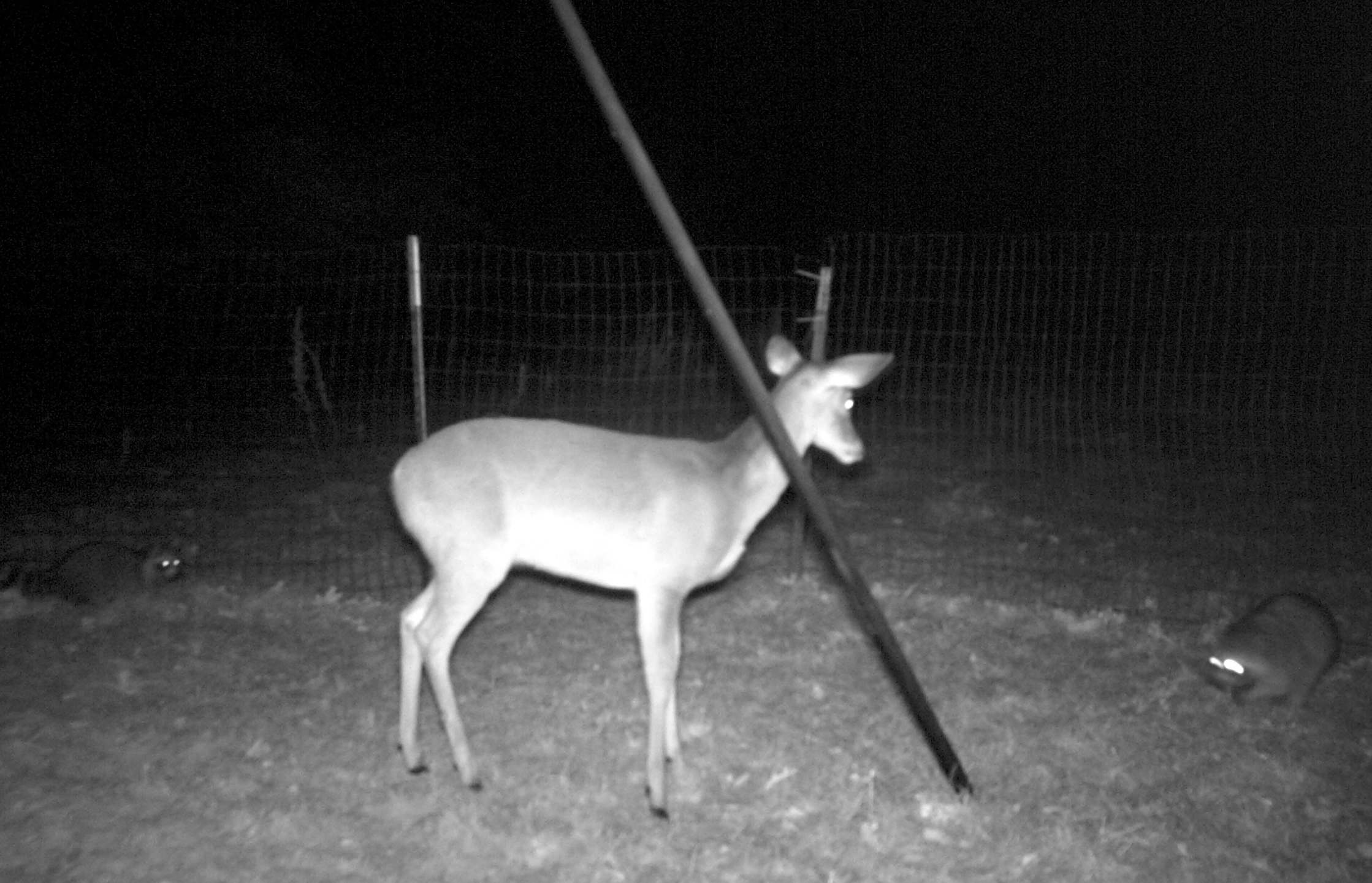 Encounters such as this are becoming more and more frequent around the corn feeder as wild game are concentrated into the small areas where food and water can be found. |
Mr. Loughlin probably already knows this, but I’ll lay it out for other readers: hunting medium and large game in drought conditions is actually fairly easy. You simply need a water source. Most rural Texas properties are dotted with stock tanks, small ponds of water used to keep cattle hydrated. Some are fed by wells, but most are naturally filled by seasonal creeks, streams, or simply by rainfall runoff from nearby fields.
Once established, especially during drought conditions, a water and food source such as this can continue to encourage wild game to become permanent visitors, if not residents, on even small properties of just a couple of hundred acres. Dense cover nearby will naturally encourage deer, hogs, and other critters to frequent the area.
If there is no natural water on the property, and stock tanks are dry or non-existent, it’s not difficult to set up a simple water source. Deer and hogs have an acute sense of smell and can locate water sources from miles away. By simply setting up a trough and automatic-waterer, you can soon establish a reliable water source for wild game. For truly primitive properties, this may mean drilling a well and installing some water lines, but if there is already water and power service to the land you don’t necessarily need a second well to keep your water source full. It’s not terribly difficult to bury a 1/2″ PVC line out to the trough from the same pump that supplies the residence.
In Texas, where baiting is legal, locating game becomes even easier. Most deer and hog hunters in Texas use corn and high-protein feeders set on a timer to dispense feed once or twice a day. To hunters in other states where baiting is illegal, this seems anathema to the ethical hunter but, as any Texas hunter will tell you, knowing where the deer or hogs might be is no guarantee of a successful hunt. Still, if you’ve got a feeder set up, with forbs and mast crops in short supply, it’s a much better bet this year that you’ll see some activity.
Rising corn prices means that it’s going to cost a bit more this year for hunters to to keep the feeders full. Current prices have deer corn hovering around $15-$20 for a 40 pound bag, and those prices are expected to go up even more. Between searing droughts in the south and middle of the states, and drenching floods to the north, the US corn harvest is looking pretty grim. Pick up your corn now before the hunting season begins in earnest and you’ll save a bit of cash.
This fall, deer and hogs will be concentrated in a manner not often seen by hunters. Find the water or food source, set up your blind there, and you’re almost guaranteed success. Deer will be smaller, and bucks will have smaller racks relative to years past, but they will be easier to locate. Scout out the water and food sources on your hunting property, and you’re sure to see activity of all sorts. Unless this fall brings tropical rains, and soon, the deer and hogs will continue to frequent these locations as the season gets underway.
This post is supported by the Texas Hunters Safety Education Course. Take and pass the required Hunter Education class online from the comfort of your own home.
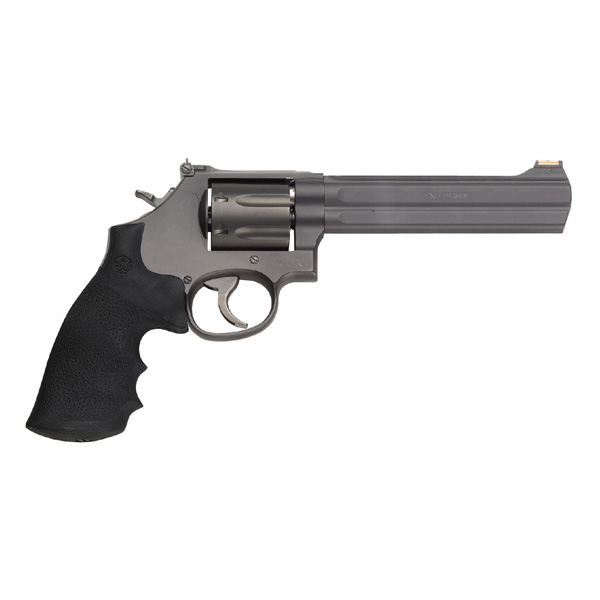 I got started hunting medium game such as deer and hogs with a traditional hunting rifle. For most hunters, deer season consists of dusting off the .270, confirming zero at the range, and then setting up a blind or tree stand in a place where deer are likely to be.
I got started hunting medium game such as deer and hogs with a traditional hunting rifle. For most hunters, deer season consists of dusting off the .270, confirming zero at the range, and then setting up a blind or tree stand in a place where deer are likely to be.
For some, this is all they want out of hunting season: some quality time spent out in the woods and the chance at bringing home some venison. For others, like myself, this is not enough. It’s not difficult to set up in a good location on properly scouted land and be able to tag a deer at 100 yards or more with a modern hunting rifle. For hunters like myself the desire to hone skills and become more intimate with the prey drives us to use more primitive methods.
Many hunters move over to bow hunting. Modern compound bows however are nothing like their ancient counterparts, and it’s not truly fair to refer to them as “primitive.” But successfully employing one in a hunt requires quite a bit of skill nevertheless. They require a hunter to set up a blind much closer, or in some situations require them to learn to quietly stalk to within 30 yards or less in order to set up a good shot.
Arguably not as difficult to utilize as a modern compound bow, handguns bridge the gap between rifle and bow hunting. They don’t pack the power of a rifle, and the shorter trajectory and lower energy of these platforms makes their effective range limited. Still, the familiarity of the trigger and aiming system makes their use somewhat familiar to hunters.
Most important, for myself at least, is the fact that getting started hunting with handguns doesn’t require a massive investment if one already has a rifle hunting setup. Bow hunting requires purchasing not just an adequate bow, but also arrows, quiver, broadheads, a trigger/release, and aiming system. This expense can quickly run into the thousands of dollars.
On the other hand, a quality .357 or .44 magnum revolver can be acquired for less than $500 used. Many hunters already have lever action rifles chambered for these calibers, but even a hunter with only a .308, .270, or .30-06 bolt action rifle can find single shot pistols chambered in the same calibers they already own. Thompson Center Encore pistols for example can be found chambered in the relatively easy shooting .243, .270, 7mm-08 and .25-06 calibers and are often scoped to make shooting out past 100 yards a simple matter.
Check your local hunting regulations before investing in a handgun for hunting. Not all jurisdictions allow the use of handguns, and some of those that do have minimum requirements with regards to caliber and muzzle energy. If a bit more challenge is what you’re seeking this hunting season, keep an eye out for some upcoming articles on the type of hunting handguns suitable for bringing Bambi to the table.
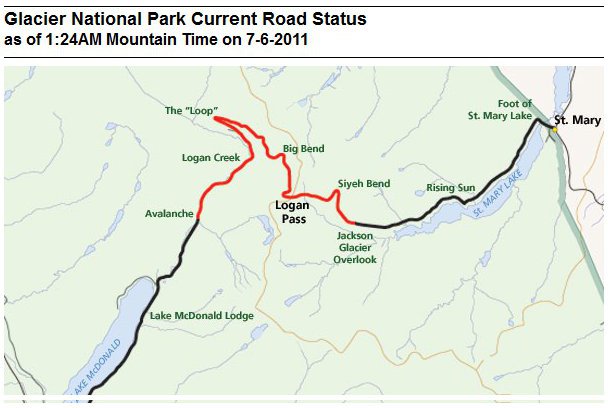 The snow pack was pretty impressive this past winter, and with the cool spring and summer temperatures across much of the Cascades, Sierras, Rockies, and Intermountain West the snow has lingered. So much so that a number of passes remain snow-covered, un-plowed and closed.
The snow pack was pretty impressive this past winter, and with the cool spring and summer temperatures across much of the Cascades, Sierras, Rockies, and Intermountain West the snow has lingered. So much so that a number of passes remain snow-covered, un-plowed and closed.
Logan pass in Glacier National Park is still closed, coming close to setting a record that was last set in 1933. It’s difficult to describe the amount of snow up there, but imagine walls of packed ice and snow 30 feet high towering over the sides of the road. A canyon of snow. That’s what is up there right now, and despite the seasonably cool temperatures, it’s still melting and, combined with heavy rains, is leading to record setting floods along the Yellowstone, Platte, Missouri and eventually Mississippi rivers.
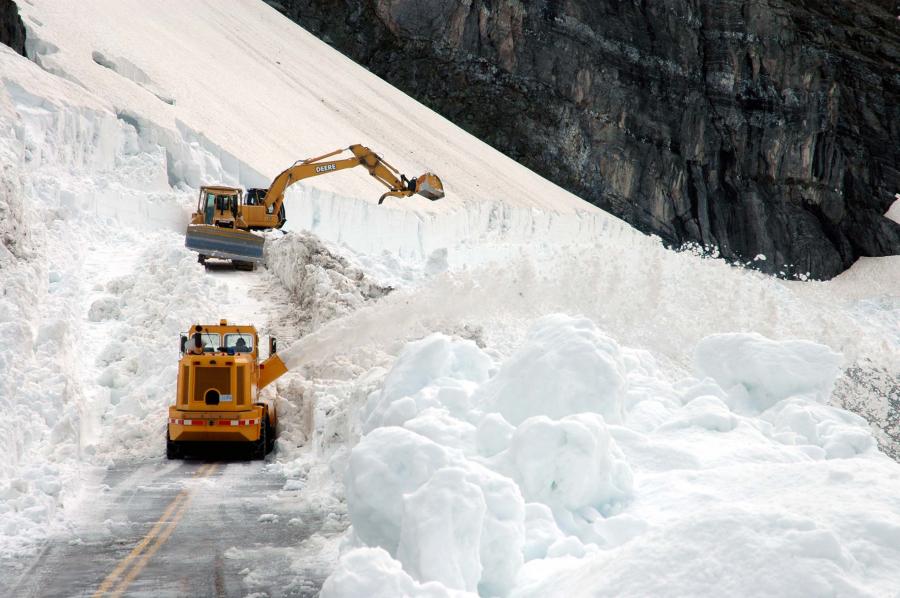 Heavy machinery is used to clear snow in Glacier Park’s Logan Pass on Going To The Sun Road |
I’m not going to claim that this is evidence that the climate change fear-mongers are wrong. Other parts of the nation are suffering from record setting drought and heat, and besides, there are much better scientific sources that show that climate cycles such as this are a natural part of the earth’s rhythms.
Still, whether it’s summer snow, record setting precipitation, droughts, or heatwaves, it affects outdoor recreation significantly. In Texas, drought plagued deer, dove, and turkey will be smaller and more concentrated around water sources while fish will be amassed in non-traditional areas in lakes and reservoirs where water levels are low. Ski bums and snowmobile riders may be enjoying the long snow season up in the mountains along with whitewater kayakers in the lower elevations, but in other locations extremely high temperatures and bans on outdoor campfires are making life less enjoyable for hikers and campers.
People who have been enjoying the outdoors for decades are used to these cycles. I don’t buy into the whole eco-weenie beliefs that driving my F-150 instead of a Prius is responsible for these cycles. Look around and you’ll find that these hot and cold, wet and dry cycles have been going on for millennia (Medieval Warm Period anyone?) and are unlikely to change anytime soon, no matter how many “carbon credits” we buy. For those of us who are single-minded in our outdoor pursuits, it may mean that we won’t get the chance to haul out the canoes and innertubes to go cruising down South-Central Texas riverways. But for the rest of us, it just means that it’s time to have fun in other outdoor adventures.
Firearm safety isn’t difficult. But it’s one of those things that, if you screw up, and if you screw up badly enough that you break more than one rule at a time, someone can get seriously injured, or even killed.
Jaxon from Gun Nuts Media posted this video over at the Gun Nuts website, and I felt it good enough to share. It’s a compilation of the worst and most egregious violations of firearm safety as seen across the internet.
Be warned, some parts of the video are disturbing.
The saddest part of all of this is how stupidly EASY it is to avoid having an “accident” like one of those shown. In fact, Colonel Jeff Cooper codified the rules of firearm safety with just four simple guidelines.
All guns are always loaded.
Never let the muzzle cover anything you are not willing to destroy
Keep your finger off the trigger until your sights are on target
Be sure of your target
That’s it, just those four simple rules. In fact, if violate these rules singly, it’s quite likely that you will still avoid damaging yourself or anyone or anything else. The problems begin when you break one or more of Col. Coopers rules at the same time.
Point a gun in an unsafe direction but kept your finger off of the trigger? Not a smart idea, and generally considered to be quite rude, but nobody will die from that. Break both rules at once? Then we’ve got trouble.
Most accidents involving guns boil down to a lack of education. Get training, learn these rules, take them to heart, and then teach your kids, teach your family, and teach your kids.
Why aren’t more kids interested in bushcraft? Hunting? Orienteering? Camping or backpacking?
It’s probably due to a lack of opportunity, or the absence of a mentor.
Winchester is sponsoring a contest to recognize hunting mentors, but I’d encourage you to recognize and encourage anyone who helps young children enjoy and learn about the outdoors.
EAST ALTON, Ill.– Each year, all over North America, millions of fond memories are shared between families and friends in the great outdoors. Perhaps no memories are more special than those shared between a new hunter and his or her hunting mentor.
Whether it’s a father teaching a son, a mother teaching a daughter or a friend teaching a friend, the bond formed between a new hunter and his or her first teacher is extraordinary. Because mentoring new hunters is vital to preserving North America’s hunting heritage, the North American Hunting Club (NAHC) created its Mentor of the Year Award in 2010 to honor North America’s most selfless and dedicated hunting mentors.
After a successful first year, the Mentor of the Year Award is back in 2011, and this year, Winchester® Ammunition is pleased to be the official ammunition sponsor of the award.
“As hunters, it’s our duty to mentor others in the outdoor lifestyle and pass on our hunting traditions,” said Brett Flaugher, Winchester Ammunition vice president of marketing and sales. “At Winchester, we want to be first in line to support the preservation of North America’s hunting heritage and we’re proud to sponsor the NAHC’s Mentor of the Year Award.”
As the official ammunition of the Mentor of the Year Award, Winchester Ammunition will contribute prize packages of Winchester gear to the five Mentor of the Year Award finalists and the person who nominates the overall winner.
The nomination period for the award is open until September 30. To nominate someone for the 2011 NAHC Mentor of the Year Award, visit www.nahcmentor.com.
Website hosting provided byKyndar.net
